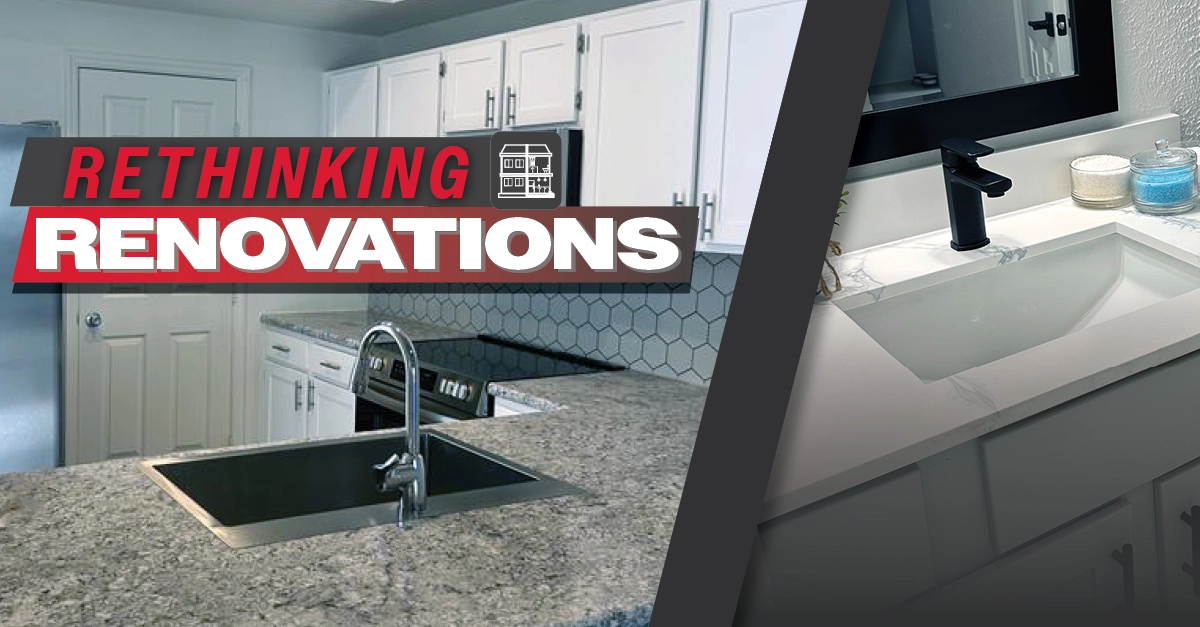Managing CapEx Surprises

Every capital expense project, renovation, or community upgrade comes with surprises. Longtime property manager Jessica Tierney oversaw 30 updates over 15 years, and she has some hard-won wisdom for anyone working on a renovation project. Learn how to plan for the unexpected, work around budget-busters, and protect your property and your team.
Whatever level of renovation project you are undertaking—from a unit refresh to a full community upgrade—you won’t know what you’re really dealing with until you get started. The portfolio is purchased, plans are made, the budget is completed, the products are ordered. The renovation begins, and...
Here come the surprises…
Chadwell Supply Strategic Partnership Manager Jessica Tierney knows all about managing CapEx surprises. Before joining the Chadwell Supply team, Jessica worked in property management. Over 15 years, she led around 30 different multifamily renovation projects. Jessica says the lessons she learned along the way helped her deal with—and often avoid—property update surprises that happened on other jobs.
Jessica stopped by The MRO Show podcast to talk about what she learned managing the good, the bad, and the ugly that comes with community upgrades. Here are some highlights from that conversation.
Anticipating the Unexpected
Jessica says she learned something with every upgrade and applied those lessons throughout her next project. What are some of the surprises and challenges a property team may face when the project begins?
- Because you are often dealing with older materials, something is going to break. No matter how careful you plan to be, build some “oops” room in your budget.
- You may encounter water damage and/or evidence of wood destroying organisms (WDOs).
- Mold, mildew, and staining are also common.
- You may also find evidence of shifting, which could be due to normal aging, or it could indicate a structural problem.
To avoid these and other potential renovation surprises, get out and walk the property.
Assess - do not assume. Ask targeted questions, including:
A Team Effort
Community upgrades are absolutely a team effort. Even if your regular maintenance team will not be directly involved in the update work, they need to know what is happening, when, and where.
- They will need to plan their work around any potential disruptions.
- Compliance and code enforcement inspectors will be coming by.
- Inspectors may ask questions of several members of your team. You want to know how they will answer.
Invite your maintenance team into the planning process.
Talk with the maintenance pros who are in and out of these units every day. The more accurate, detailed, real-time knowledge you have about the property, the more prepared you and your team will be to manage any surprises.
Be thorough in your review of the property.
Walk around each building and review each unit. Some problems will prove an easy fix. Others cannot be avoided, skipped, or “band-aided” over. The clearer the picture you have of what you are really dealing with, the better prepared your team will be to manage those challenges.
Discuss the plan with your team throughout the process.
Talk through each phase and how each building and unit will be approached. Address any questions or concerns.
Review lessons learned from previous projects.
Every community upgrade is a good opportunity to learn, to improve, to pick up some new processes and procedures. Be intentional about reviewing your processes. What went well? What can be improved? Time invested when the experience is fresh will yield wisdom that can be applied in every project to come.
Discuss, in advance, “what happens when…”
Be certain your team knows who is responsible, in advance, as well as how to take effective action when any of the following happens:
| Plumbing may be |
|
|---|---|
| Walls may be |
|
| Spaces may have |
|
| Electrical may be |
|
| Minor issues identified in the walk through may |
|
| Updates to grounds may require |
|
Knowing what you will do and who you will call in each scenario will avoid additional delays, save time, and limit headaches. The bottom-line goal of the property manager is to protect the asset, the staff, and the residents. Having a “When X Happens” plan in place is an important part of realizing that goal.
For more practical tips on how to avoid and manage CapEx surprises, listen to the entire renovation conversation with Jessica Tierney, here:
![]() For more tips, tricks, and product knowledge to help with all your renovations needs, visit Product Knowledge: Renovations
For more tips, tricks, and product knowledge to help with all your renovations needs, visit Product Knowledge: Renovations





